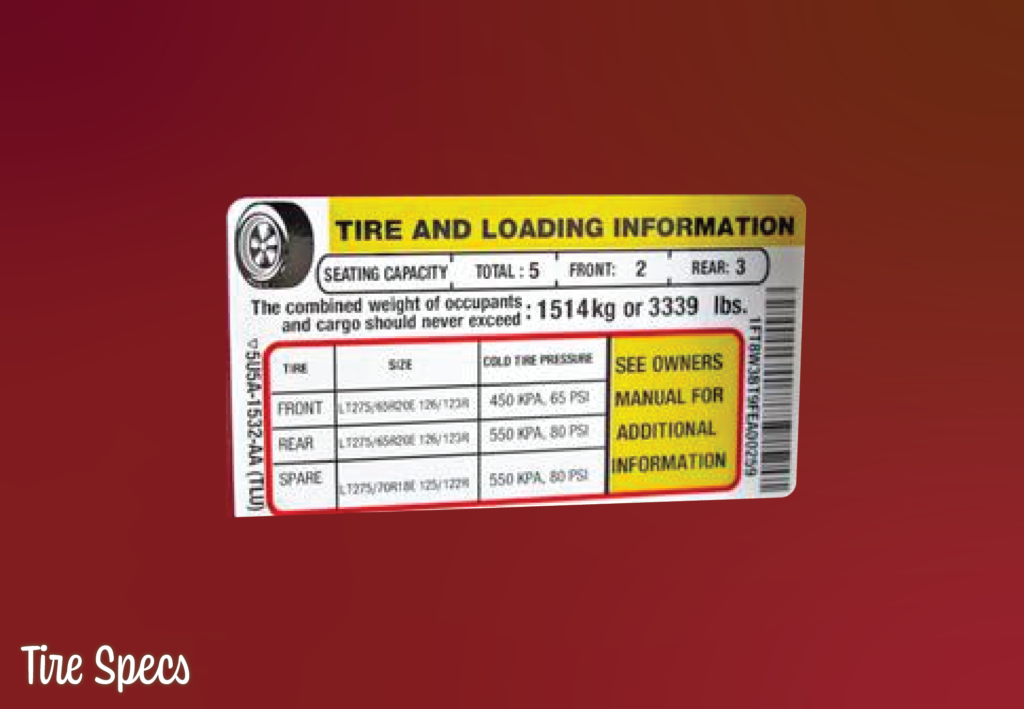Tool List: Tire Pressure Gauge, Air Compressor
Proper Tire Pressure is Underrated
Keeping your tires inflated correctly is one of the best ways to ensure optimal handling, tire life, and fuel economy. It’s a very simple process with minimal tools required.
It’s not enough to rely on your tire pressure monitoring system; Monitoring systems are a great tool, however, sensors can malfunction or lose calibration. It’s always a good idea to regularly check your pressure manually.
Get yourself a tire pressure gauge and have an air compressor handy in case you need to inflate your tires, and let’s get started.
Find Your Tire Specs

Before you check your tire pressure, you need to find the recommended pressure for your vehicle’s tires. Your vehicle’s tire information tag location will vary; Check these locations to find yours:
- Driver’s side door jamb
- Glove box
- Inside trunk/trunk lid
- Owner’s manual
- Fuel door
There may be a few different tire sizes listed on the tag. If the pressures vary for each size, you’ll need to check your tire size. This can be found on the sidewall of your tire. If you have different sized tires than your vehicle was equipped with from the factory, you’ll need to do your research to ensure you’re inflating your tires to the proper pressure. When in doubt, look at the sidewall of your tire(s); You’ll see a “Max Inflation” rating – Always make sure you’re staying BELOW that pressure.
Jot down the tire pressure rating in PSI for reference.
Check Your Tire Pressure

To check your tire pressure, you’ll need a tire pressure gauge. A cheap, pen-style gauge is the best option. Digital gauges are also an option, however, I prefer a gauge that doesn’t require batteries (one less thing to worry about). Make sure the end of the gauge (with the numbers) is fully pushed in.
Locate your tire’s valve stem – Look for a small black tube poking out of your rim with a plastic or metal cap on it.
Remove the cap, and press the top of the pressure gauge squarely onto the valve. You’ll hear air escape if you’re not squared up against the valve. Once the air stops, you’ll know you’ve got a good reading. Check the end of the pressure gauge for your tire’s PSI and compare it to the rating you found earlier.
If your pressure is too high, flip the gauge over and push the tip of the valve stem in to release air from the tire. If your pressure is too low, you’ll need to add air.
Adding Air to Your Tire

You can find air compressors at some gas stations (look for a sign that says “AIR”) or you can purchase a handy compact air compressor to keep in your vehicle/garage. Make sure your compressor is equipped with an air attachment (chuck) suitable for vehicle tires.
Before filling your tires, check carefully for sidewall damage. If you see any bulging, deep gouges, or gashes in your tire sidewall, don’t add air. Bring your vehicle in to a service station and have them determine if your tire is still safe to use. The last thing you want is a blowout!
If all looks good, you can start adding air to your tire. The process is similar to checking your tire pressure; You’ll want to push the air chuck onto the valve stem as squarely as possible. You’ll hear air start to flow when your positioning is correct. Only add air for a few seconds at a time and check with your gauge frequently to avoid over-inflating. Repeat the process for all your tires.
Conclusion
It’s super important to ensure your tires are inflated to the proper pressure. Over-inflation or under-inflation can cause tire damage and impact your vehicle’s handling, traction, and fuel economy. Check your pressure regularly and keep things running as smoothly and efficiently as possible.
